
Oral physiology ZHANG LEI School of Dentistry,Tongji University 190
Oral physiology ZHANG LEI School of Dentistry, Tongji University

Oral physiology Physiology is the branch of biology that deals with the study of functions of livingmatter. Oral physiology,there-fore, is the study of functions of the mouth and associated structures. 1902
Oral physiology Physiology is the branch of biology that deals with the study of functions of livingmatter. Oral physiology, there-fore, is the study of functions of the mouth and associated structures
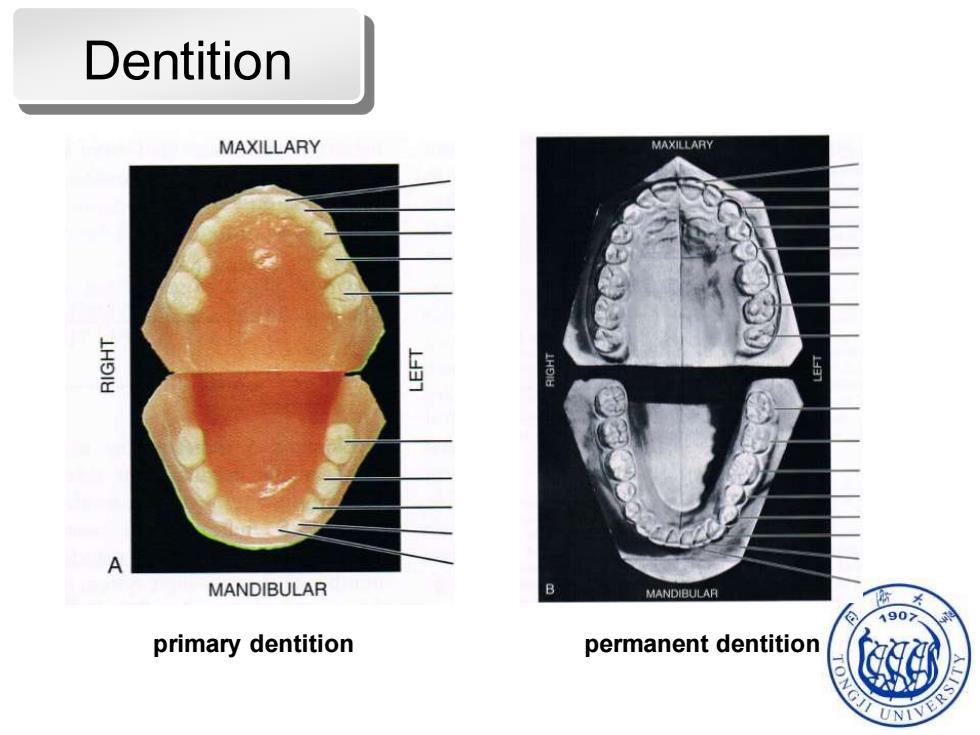
Dentition MAXILLARY MAXILLARY MANDIBULAR MANDIBULAR 4902 primary dentition permanent dentition
Dentition primary dentition permanent dentition

Occlusion ▣Concept 1.the act or process of closure or of being closed or shut off 2.the static relationship between the incising or masticating surfaces of the maxillary or mandibular teeth or tooth analogues Mandible 4907
Occlusion Concept 1. the act or process of closure or of being closed or shut off 2. the static relationship between the incising or masticating surfaces of the maxillary or mandibular teeth or tooth analogues

INTERCUSPAL OCCLUSION: the complete intercuspation of the opposing teeth,independent of condylar position. “Centric occlusion 1902
INTERCUSPAL OCCLUSION: the complete intercuspation of the opposing teeth, independent of condylar position. “Centric occlusion
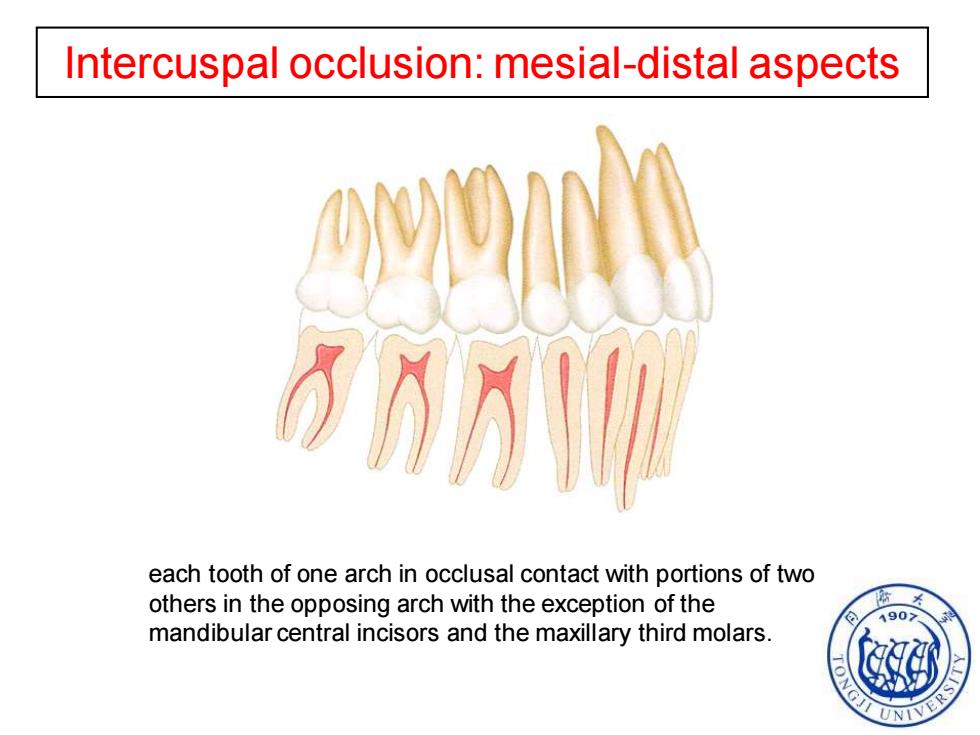
Intercuspal occlusion:mesial-distal aspects each tooth of one arch in occlusal contact with portions of two others in the opposing arch with the exception of the 4907 mandibular central incisors and the maxillary third molars
Intercuspal occlusion: mesial-distal aspects each tooth of one arch in occlusal contact with portions of two others in the opposing arch with the exception of the mandibular central incisors and the maxillary third molars
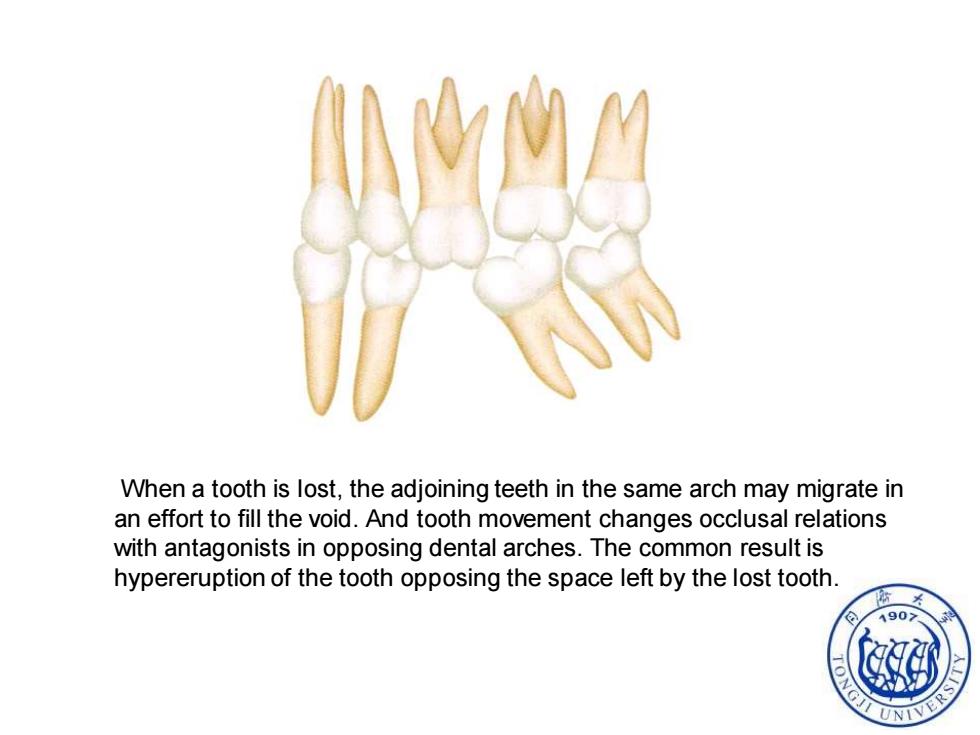
When a tooth is lost,the adjoining teeth in the same arch may migrate in an effort to fill the void.And tooth movement changes occlusal relations with antagonists in opposing dental arches.The common result is hypereruption of the tooth opposing the space left by the lost tooth. 190
When a tooth is lost, the adjoining teeth in the same arch may migrate in an effort to fill the void. And tooth movement changes occlusal relations with antagonists in opposing dental arches. The common result is hypereruption of the tooth opposing the space left by the lost tooth
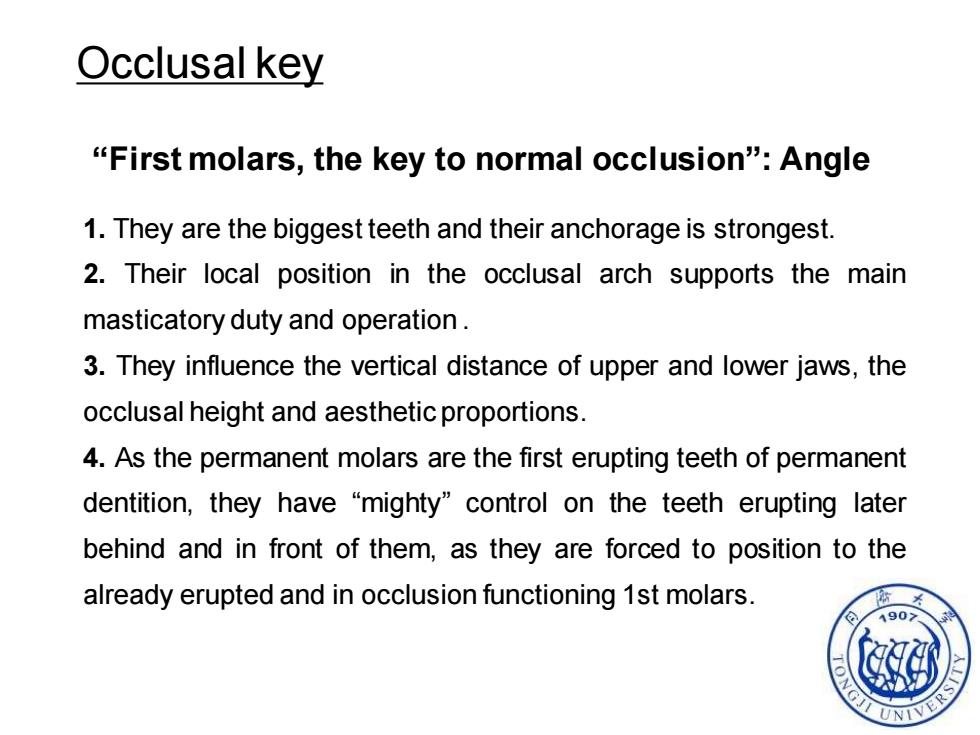
Occlusal key "First molars,the key to normal occlusion":Angle 1.They are the biggest teeth and their anchorage is strongest. 2.Their local position in the occlusal arch supports the main masticatory duty and operation. 3.They influence the vertical distance of upper and lower jaws,the occlusal height and aesthetic proportions. 4.As the permanent molars are the first erupting teeth of permanent dentition,they have "mighty"control on the teeth erupting later behind and in front of them,as they are forced to position to the already erupted and in occlusion functioning 1st molars. 190
Occlusal key 1. They are the biggest teeth and their anchorage is strongest. 2. Their local position in the occlusal arch supports the main masticatory duty and operation . 3. They influence the vertical distance of upper and lower jaws, the occlusal height and aesthetic proportions. 4. As the permanent molars are the first erupting teeth of permanent dentition, they have “mighty” control on the teeth erupting later behind and in front of them, as they are forced to position to the already erupted and in occlusion functioning 1st molars. “First molars, the key to normal occlusion”: Angle
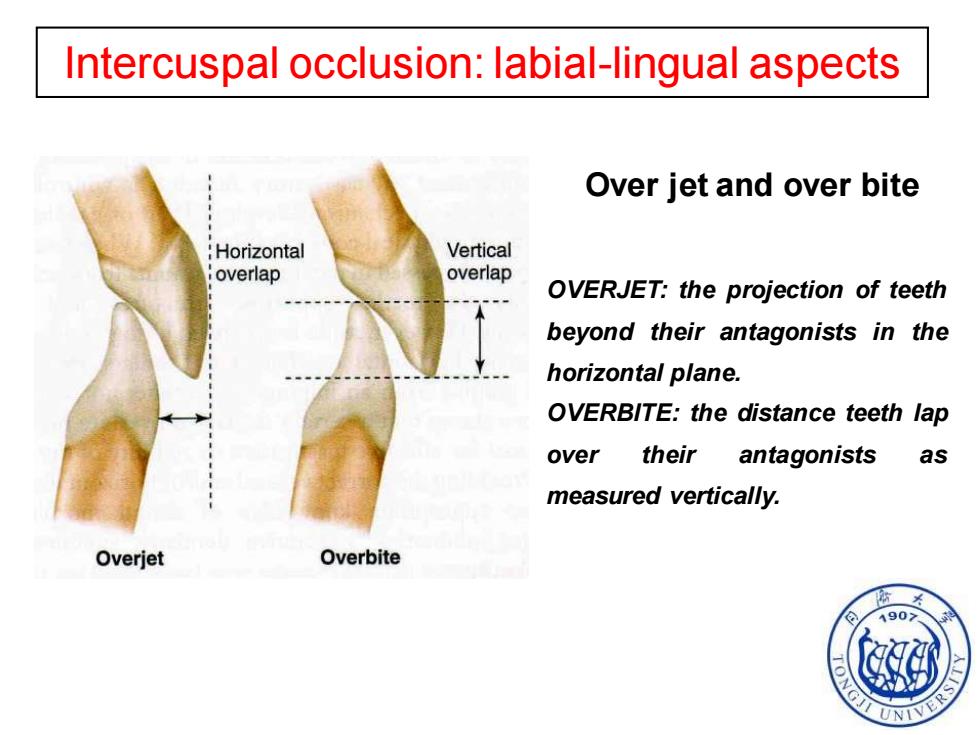
Intercuspal occlusion:labial-lingual aspects Over jet and over bite Horizontal Vertical overlap overlap OVERJET:the projection of teeth beyond their antagonists in the horizontal plane. OVERBITE:the distance teeth lap over their antagonists as measured vertically. Overjet Overbite 190>
Intercuspal occlusion: labial-lingual aspects Over jet and over bite OVERJET: the projection of teeth beyond their antagonists in the horizontal plane. OVERBITE: the distance teeth lap over their antagonists as measured vertically
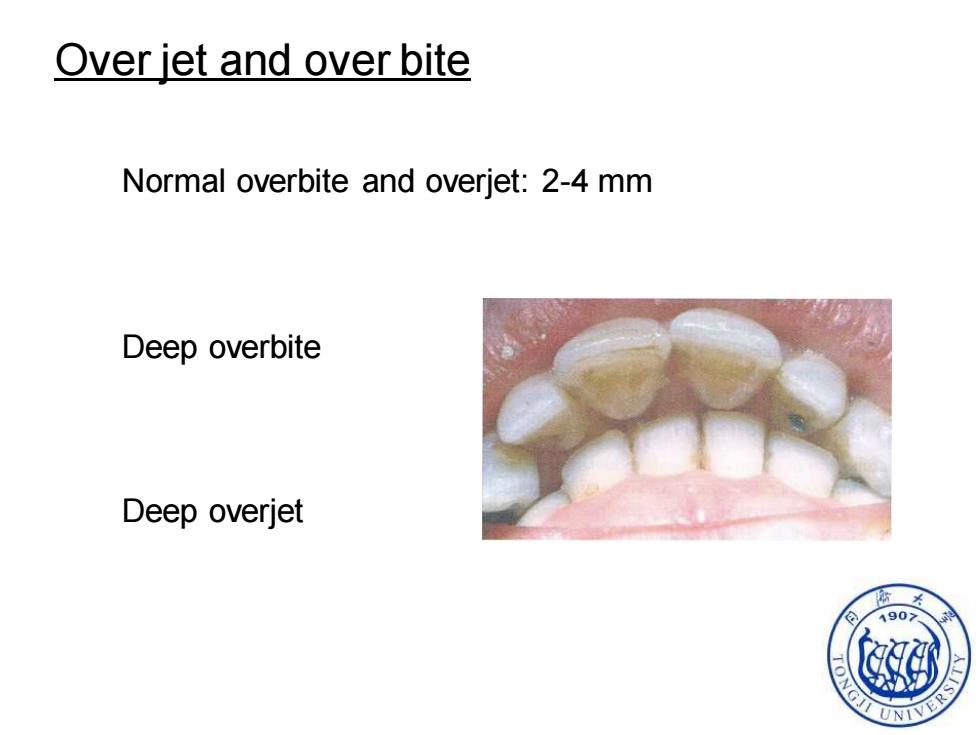
Over jet and over bite Normal overbite and overjet:2-4 mm Deep overbite Deep overjet 190>
Over jet and over bite Normal overbite and overjet: 2-4 mm Deep overbite Deep overjet